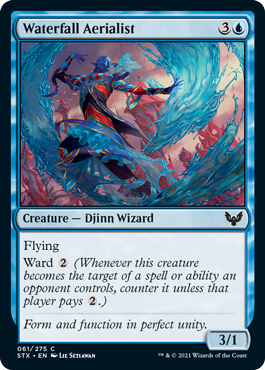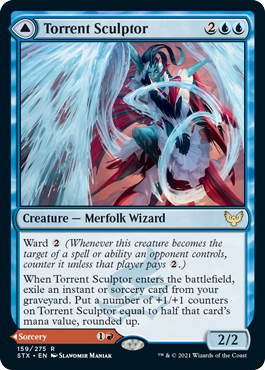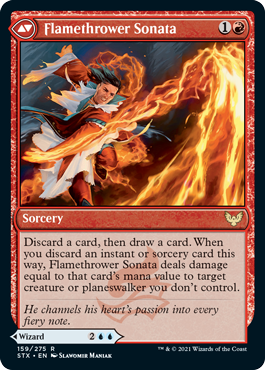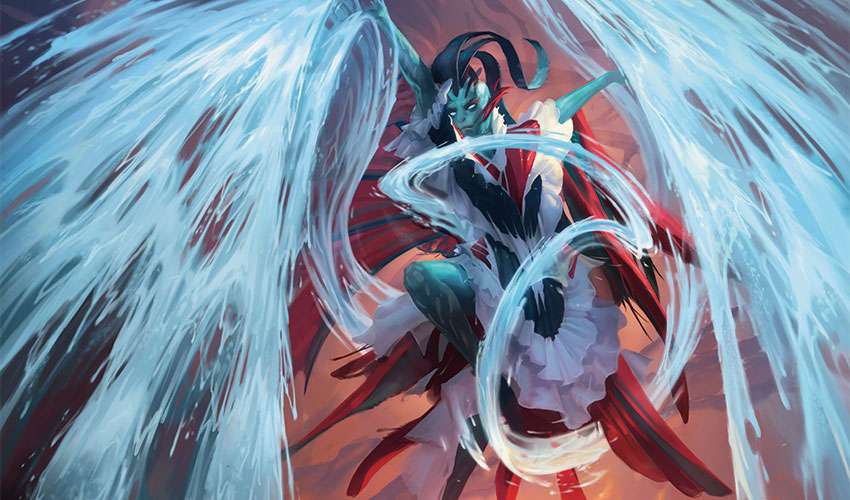
INTRODUCING WARD By Andrew Brown and Jules Robins
Share
*Disclaimer
All rights belong to Wizards of the Coast
to see the full article, click here: 
INTRODUCING WARD
Posted in Card Preview on March 25, 2021
It's not every day Magic introduces a new evergreen keyword. The game already asks new players to learn a whole lot of things, and the more we have, the steeper the learning curve. However, occasionally, we find something we're going to use enough to make it worth learning, and this is one of those times. So, for this momentous occasion, you get two writers since we proposed this new keyword together:
I (Jules Robins) will appear in normal text.
Andrew Brown will appear in highlighted text.
From the very beginning, spells that kill creatures have been more efficient than the creatures they're killing. They must be, otherwise it's too hard to play catch-up and the deck that's ahead will tend to stay ahead. But making the removal more efficient runs the risk of a deck full of creatures never being able to establish a board in the first place. The cleanest solution is to make sure there are some creatures the removal can't answer efficiently.
Protection is a bit heavy-handed for this purpose, though. It also hampers blocking and racing as ways to combat the cards with the mechanic. So, it wasn't long until designers started looking for more targeted (pun intended) approaches to the challenge. Eventually, they settled on the simplest implementation, and in Future Sight, shroud became a keyword.
Shroud did the job on a lot of cards, but it wasn't exactly problem-free. For one thing, a huge portion of players learning the mechanic intuited that they'd be able to target their own shroud creatures, and even after learning how it worked, a lot of players still found that aspect disappointing. Building your own monster has been a longtime fan-favorite way to play, but usually it's just too weak against removal spells to be viable. So, once again, we started experimenting with tweaks, and come Magic 2012, we settled on one and keyworded it.
Hexproof addressed that issue but created its own: piling a bunch of improvements onto the same creature that an opponent can't interact with. Magic is at its most fun when there's back-and-forth interaction, and players given a creature that can't be removed at all have too much incentive to make sure that blocking doesn't work either. So even innocuous-looking hexproof cards tend to cause problems.
A hexproof card that has caused a large range of emotions is Gladecover Scout. For Limited, it was largely unsuccessful as either a weak card or a frustrating card to play against in combination with Trollhide. As for Constructed formats, the Bogles archetype is a polarizing deck. There are a lot of good things about it. It's a deck with a distinct play pattern. It's relatively easy to play. It has a strong sense of identity.
The biggest issue with the deck is that the general lack of counterplay available can be frustrating to play against. However, given sideboard options, I would say that the Bogles archetype has a positive impact on Modern. But as more players play Best-of-One on MTG Arena, we are likely to avoid supporting Bogle-style decks for Standard since sideboarding is the main point of counterplay.
In short, it's not much fun to feel powerless—a lesson that recalls some previous Magic design solutions to problems. We don't actually need to turn off removal against so many creatures, we just need to make it less effective.
One of the difficulties in trying to make creatures have an impact on Standard is that they normally have to have an immediate effect on the game. A card that comes to mind for me is Drana, Liberator of Malakir. When I first read the card as a player, it looked reasonably powerful, and I was excited to try it in a Standard Ally deck.
The issue that presented itself during playtesting was that Drana didn't have enough of an immediate impact and was too susceptible to cheaper removal spells. If I could magically go back in time and edit Drana, I would add some form of light self-protection to ensure that it can attack and leverage its strengths.
A question that Gerry Thompson once asked me still resonates with me to this day: "How many converted mana cost (mana value) 3 or higher creatures have impacted recent Standard without having some form of immediate effect on the game?" The list is a lot shorter than I would have guessed. One of my favorite cards on this list is Dragonlord Ojutai, with the key to its success being in its conditional resilience. High-cost creatures showing up in Standard decks is a good thing, and a new mechanic could give us more tools in our arsenal to make that true.
All the play patterns we're describing are true across colors, but broadening the use of an effect always runs the risk of undermining the color pie: making colors play out too similarly and causing them to lose their distinct identities. If we wanted to make removal-resistant creatures in all colors, we needed to figure out how to make them play differently. So we started experimenting with a few cards.
The results were very promising, for 40-card, 60-card, and 100-card decks alike. So, as of Strixhaven, we're narrowing the focus a bit to create a new keyword mechanic:
Ward [COST] (Whenever this permanent becomes the target of a spell or ability an opponent controls, counter it unless that player pays [COST].)

The two most common forms you'll see are costing additional mana (in white, blue, and green) and costing additional life (in black and red). These two approaches both protect against removal but ask different things of the rest of your deck and give opponents different incentives for when to bite the bullet and remove the warded creature. As we go forward, expect to see some more unique ward costs as well!
Moving forward, we are not taking hexproof out of Magic. There are a lot of cards where hexproof has more merit than ward. A common case being on combat tricks like Ranger's Guile and Snakeskin Veil, and sometimes those big creatures that are hard to interact with are positive additions to their environments (looking at you, Carnage Tyrant). At the end of the day, we've added another tool in the toolbox and will try to use it when it best suits a card.
Here's looking forward to a greater diversity in the types of creatures that can make an impact in our future! Oh, and I almost forgot. We owe you a preview card too:


My favorite thing about this card is how the backside sets up future copies of the front to succeed. Normally, getting a high-cost instant or sorcery in your graveyard is a difficult hoop, but Flamethrower Sonata makes that easy. Then once you play Torrent Sculptor, you have a large threat that is more difficult to remove than your average Colossal Dreadmaw.

Strixhaven: School of Mages releases April 23. Check out the Card Image Gallery and Variant Image Gallery—which includes the complete Mystical Archive—to see even more amazing cards!
Posted in Card Preview on March 25, 2021


